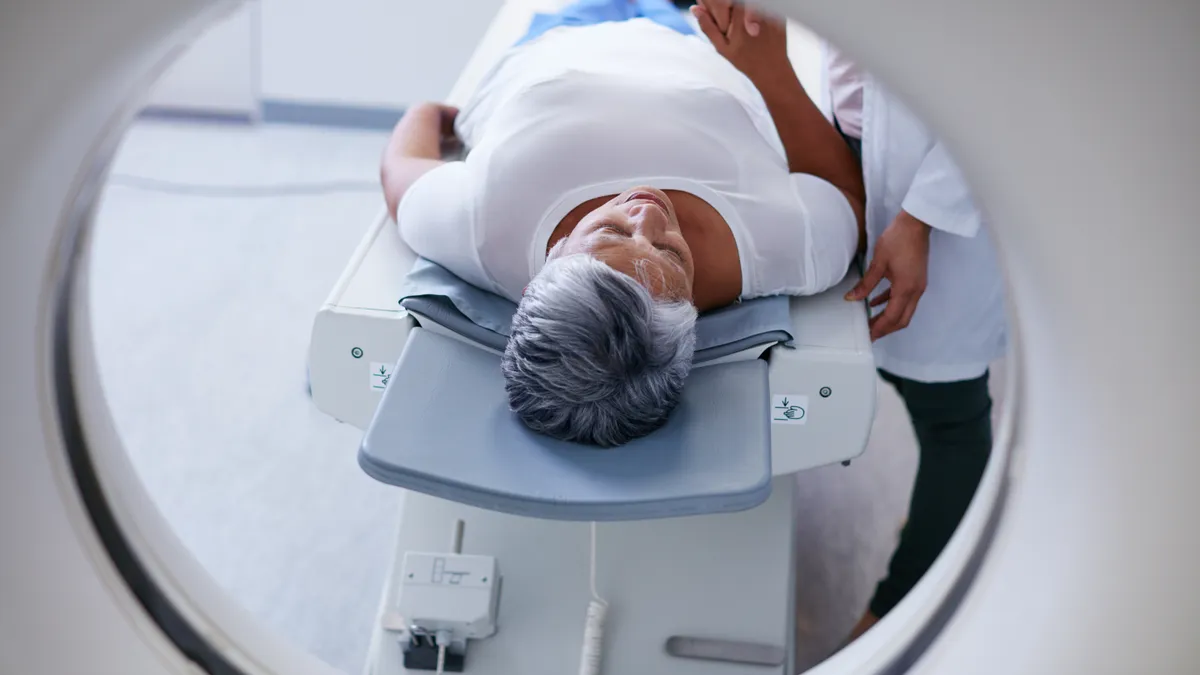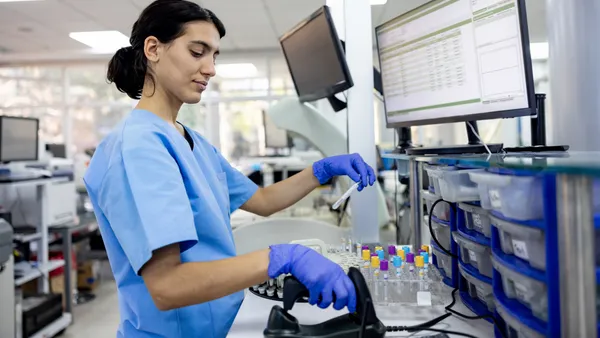Dive Brief:
- A study of Medicare claims data shows that while nurse practitioners and physician assistants are increasingly being called upon to perform imaging procedures, these non-physician providers rarely interpret the images themselves, the American Roentgen Ray Society said.
- The analysis, by researchers at Emory University, suggests a need for standardized, focused training programs for non-physician professionals to formally define their roles within radiology services.
- The study is scheduled for publication in the November issue of the American Journal of Roentgenology.
Dive Insight:
Use of computed tomography, magnetic resonance imaging, ultrasound and nuclear medicine imaging has continued to rise despite concerns about overuse leading to calls to curb the amount of imaging in medicine, according to a large study published this month in the Journal of the American Medical Association.
Further, precision medical imaging is expected to see a sharp rise in the next decade, driven by technological advances such as image-based 3D printing.
The Emory University researchers used data from Medicare Physician/Supplier Procedure Summary Master Files. They found that between 1994 and 2015, diagnostic imaging services rose 24%, from 339,168 to 420,172 per 100,000 Medicare beneficiaries. At the same time, diagnostic imaging services performed by non-physician practitioners increased 14,711% from 36 to 5332 per 100,000 beneficiaries.
The overall rate of services performed by non-physicians was still low, at 1.27% of all imaging in 2015.
Radiography and fluoroscopy across all time years were the areas that saw most of the non-physician-billed imaging services. Annual service counts for these services increased from 10,899 to 1,665,929 between 1994 and 2015.
The research also showed large variation in usage patterns between states. Non-physician-billed imaging was most common in South Dakota (7987 services per 100,000 beneficiaries) and Alaska (6842 services per 100,000 beneficiaries) and was least common in Hawaii (231 services per 100,000 beneficiaries) and Pennsylvania (478 services per 100,000 beneficiaries).
Emory University researcher Valeria Makeeva said the growth in procedural, evaluation, management and diagnostic services points to a need for standardized, supervised training programs for professionals in the field, such as those that exist for radiologic technologists aspiring to become radiologist assistants.










